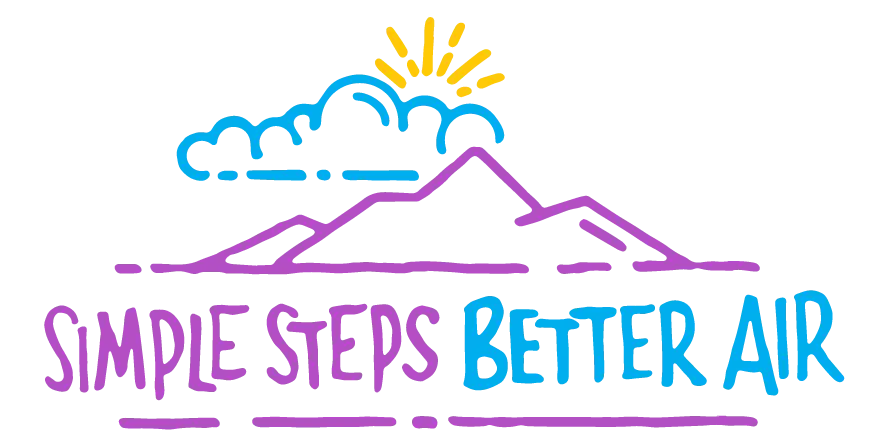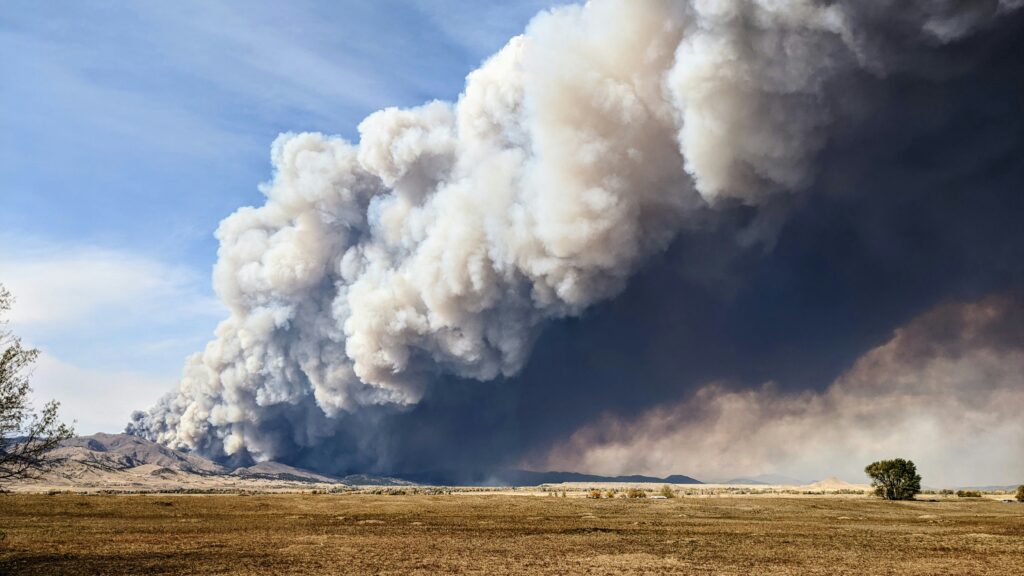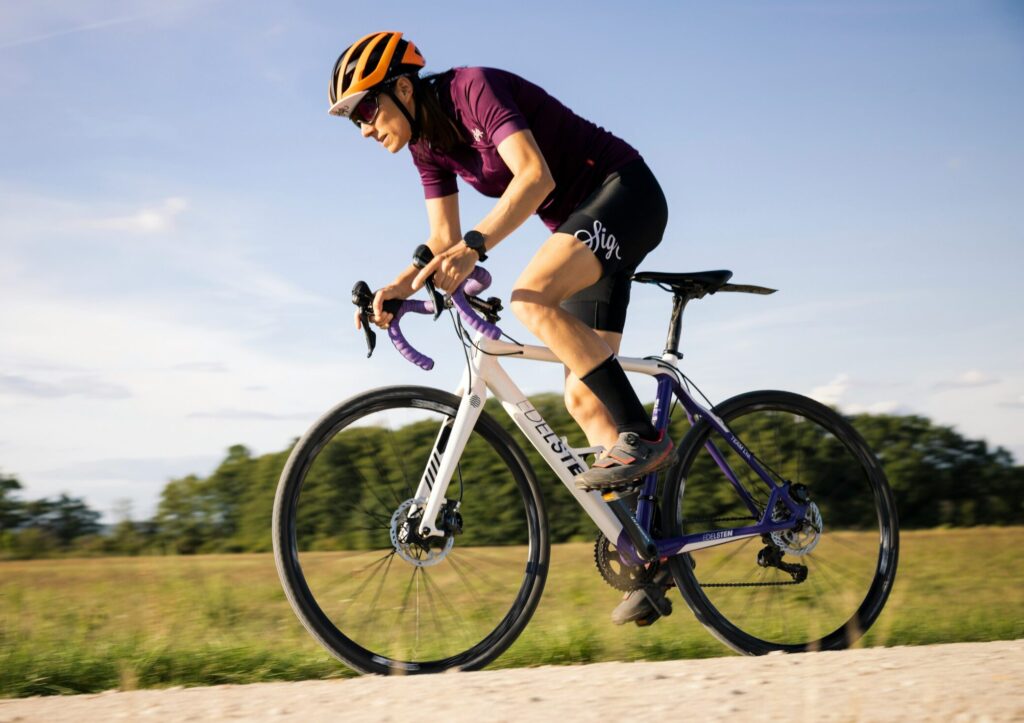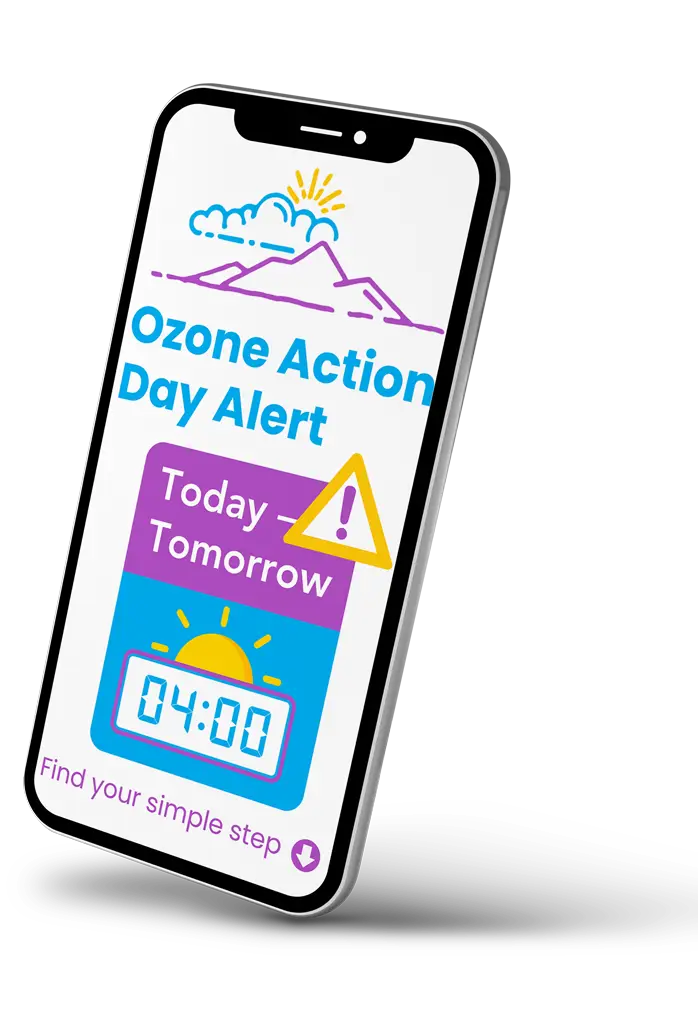Picture this: It’s another hot, sunny, blue-sky day in the Colorado Front Range. This kind of summer day is the perfect one to spend doing something active outside — like going for a run or a hike, going climbing, or riding your bike.
Despite the beautiful weather, however, you may feel some irritation in your throat, or a tightness in your chest while you’re outside, or you might feel more winded than usual after a more intense outdoor activity. Your asthma may also be acting up.
You could chalk it up to seasonal allergies or the altitude, but these impacts on your breathing might be the result of ground-level ozone: the Front Range’s most pressing air quality problem each summer. We can’t see or smell it, but this invisible pollutant accumulates the most on hot and sunny summer days, reaching its highest levels in the afternoon and early evening.
While ozone serves an important purpose high up in the atmosphere — protecting us from the sun’s ultraviolet radiation — at ground level, high concentrations of ozone are unhealthy. Ozone makes it difficult to breathe, increases our susceptibility to respiratory infections, and exacerbates respiratory ailments such as asthma. The American Lung Association compares breathing elevated levels of ozone pollution to getting a sunburn on your lungs.
When an Ozone Action Day Alert is issued in the Front Range, that means ground-level ozone concentrations are forecasted to reach levels “unhealthy for sensitive groups.” In this range, people with heart or lung health issues, older adults, and children are advised to reduce prolonged or heavy exertion outdoors if possible.
But what about the impact on Colorado’s outdoor athletes? Runners and cyclists breathe harder when exercising outdoors, exposing them to more air pollution on days with poor air quality.
First, if you’re active outdoors on high ozone days, it is a good idea to be ozone aware! Pay attention to how your body feels – there’s a difference between “it hurts so good” and “I don’t feel so good.” Remember to watch for coughing or shortness of breath, as that is a sign that ozone could be affecting your health, that you need to take it easy, or even seek medical attention.
Second, take some simple steps to mitigate the negative health impacts of summer ozone in the Front Range! Your short and long-term health – especially as you aim for those PRs and KOMs – will thank you.
Sign up for ozone alerts
Between late May and mid-September, Simple Steps. Better Air. and the Regional Air Quality Council (RAQC) issue ground-level ozone advisories in partnership with the Colorado Department of Public Health and Environment (CDPHE). Known as “Ozone Action Day Alerts,” these advisories forecast the days most likely to have higher ozone concentrations and negatively affect our health. These forecasts can help you plan your workouts a day or so in advance!
If you live in the Colorado Front Range, signing up for text or email alerts from Simple Steps. Better Air. makes it easy to know when it matters most to protect your health! Text “BetterAirCO” to 21000 for text alerts or click here to sign up for emails.
We will only send you a text or an email on the days when there is an Ozone Action Day Alert. You can unsubscribe or resubscribe at any time. And if you ask us a question, we’ll probably text you back! However, please note this is not a real-time communication system.
Check the air quality
Before heading out for a ride, check the air quality in your area! We recommend checking AirNow.gov or using the AirNow mobile app, where you can sign up to receive optional push notifications for air quality forecasts.
The original Air Quality Index (AQI) is the U.S. EPA’s tool for communicating daily air quality for five major pollutants that are regulated by the Clean Air Act: ozone, particle pollution (also called particulate matter, like from wildfires), carbon monoxide, nitrogen dioxide and sulfur dioxide. The AQI considers air quality over time: the ozone AQI is an 8-hour index, and for particle pollution, it’s 24 hours.
The NowCast AQI shows your current (real-time) air quality using the AQI colors and scale. EPA only calculates a NowCast for two pollutants: ozone and particle pollution.
If you receive air quality notifications from other apps on your smartphone, such as from Apple or private weather apps, those are all created from the same data and forecasts sent out from the Colorado Department of Public Health and Environment’s air quality team.
Take advantage of timing
Ground-level ozone levels are usually highest between noon and 7 or 8 p.m. in the summer months. On action days, we recommend people take some of the following actions to reduce their exposure:
- Get a head start: Exercise outdoors in the morning hours, instead of after work or in the early evening.
- Chase the sunset: Take advantage of our late summer sunsets with activities outdoors after 7 or 8 p.m., when ozone levels decrease.
Shorten the duration or intensity of your outdoor activity
We know you may have a goal to reach or a race coming up, and you can’t always adjust which days you need to train or race. But you can get creative with which workout you do on what day! On higher ozone days, shorten the duration or intensity of your workout if you can. That VO2 max training you’ve been planning? Better to save it for a day without an ozone action alert.
Opt for an indoor activity
Another option is to be strategic with your training and exercise. If the air quality isn’t good outdoors, you could swap the bike ride or run for a weight training session in the gym, laps in the pool, having fun in the indoor climbing gym, or a yoga or stretching class for greater flexibility. (I’m looking at you, cyclists!)
Run or ride indoors
The dreaded treadmill or trainer, I know. But the easiest way to avoid breathing in higher levels of ground-level ozone is to stay inside, close the windows, and run the air conditioning.
Your home acts like a shield to ozone molecules (O3), which will react with the building walls and be unable to make it inside. While some of the ingredients for ozone can make their way indoors – as no building is completely airtight – ozone has a much harder time forming indoors because windows filter out the ultraviolet (UV) light it needs to kick off its chemical reaction.
Staying inside is especially important if there is also wildfire smoke or the AQI is over 150, as those conditions are harmful for all people – even without engaging in any exercise.
If there is wildfire smoke, running a HEPA or equivalent quality air purifier indoors can help remove it. High quality, well-fitted respirators, such as KN95s, KN94s, and N95s, are also great tools both indoors and outdoors to filter out wildfire smoke, particle pollution, and dust, to help with allergies, and prevent the transmission of airborne infectious disease.
Take our survey
Want to help inform our work or spread the word? You can take our outdoor athlete survey to let us know how outdoor air quality affects you, and how you might be willing to help others play hard and breathe easy.
—————————–
Sources:
Air Pollution and Its Unique Risks for Athletes – https://www.onegreenplanet.org/human-interest/air-pollution-and-its-unique-risks-for-athletes/
Exercising Outdoors? Beware of PM2.5 and Ozone Risks – https://www.msn.com/en-xl/news/other/exercising-outdoors-beware-of-pm2-5-and-ozone-risks/ar-AA1ycvVK
The Conversation – https://theconversation.com/ground-level-ozone-continues-to-damage-health-even-at-low-levels-99182
Vox – https://www.vox.com/climate/23769186/bad-air-quality-index-wildfires-pollution
Air Quality and Cycling: When to Ride, When to Stay Home – https://datadrivenathlete.com/2021/07/23/air-quality-and-cycling-when-to-ride-when-to-stay-home/
CDPHE – https://cdphe.colorado.gov/ozone-pollution-and-your-health
US EPA – https://www.epa.gov/ground-level-ozone-pollution/health-effects-ozone-pollution
US EPA – https://www.epa.gov/ground-level-ozone-pollution/ground-level-ozone-basics#effects
American Lung Association – https://www.lung.org/clean-air/outdoors/what-makes-air-unhealthy/ozone#how




